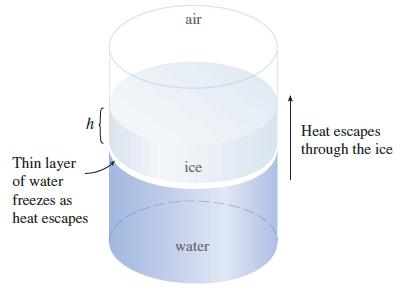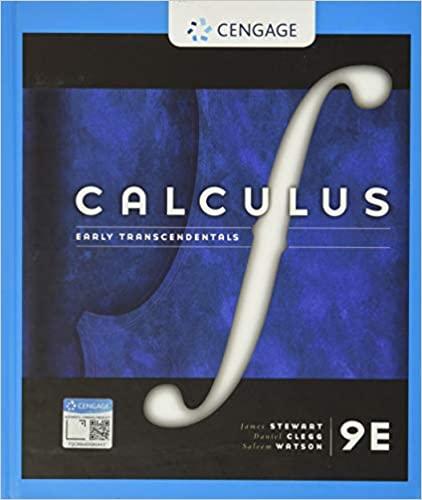Many factors influence the formation and growth of sea ice. In this exercise we develop a simplified
Question:
Many factors influence the formation and growth of sea ice. In this exercise we develop a simplified model that describes how the thickness of sea ice is affected over time by the temperatures of the air and ocean water. As a good model simplifies reality enough to permit mathematical calculations but is accurate enough to provide valuable conclusions. Consider a column of air/ice/water as shown in the figure. Let’s assume that the temperature Ta (in °C) at the ice/air interface is constant (with Ta below the freezing point of the ocean water) and that the temperature Tw at the ice/water interface also remains constant (where Tw is greater than the water’s freezing point).

Energy transfers upward through the ice from the warmer seawater to the colder air in the form of heat Q, measured in joules (J). By Fourier’s law of heat conduction, the rate of heat transfer dQ/dt satisfies the differential equation

where k is a constant called the thermal conductivity of the ice, A is the (horizontal) cross-sectional area (in m2) of the column, and h is the ice thickness (in m).
(a) The loss of a small amount of heat ΔQ from the sea water causes a thin layer of thickness Δh of water at the ice/water interface to freeze. The mass density D (measured in kgym3) of seawater varies with temperature, but at the interface we can assume that the temperature is constant (near 0°C) and hence D is constant. Let L be the latent heat of seawater, defined as the amount of heat loss required to freeze 1 kg of the water. Show that Δh ≈ (1/LAD)ΔQ and hence

(b) Use the Chain Rule to write the differential equation

and explain why this equation predicts the fact that thin ice grows more rapidly than thick ice, and thus a crack in ice tends to “heal” and the thickness of an ice field tends to become uniform over time.
(c) If the thickness of the ice at time t = 0 is h0 , find a model for the ice thickness at any time t by solving the differential equation in part (b).
Step by Step Answer:

Calculus Early Transcendentals
ISBN: 9781337613927
9th Edition
Authors: James Stewart, Daniel K. Clegg, Saleem Watson, Lothar Redlin





